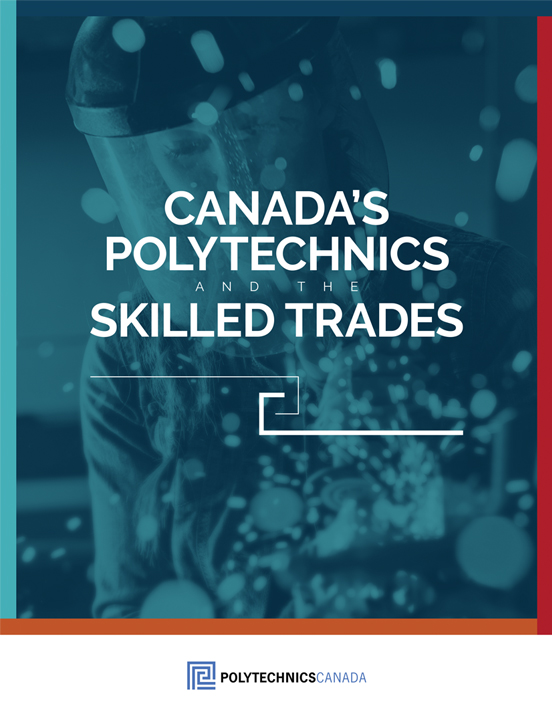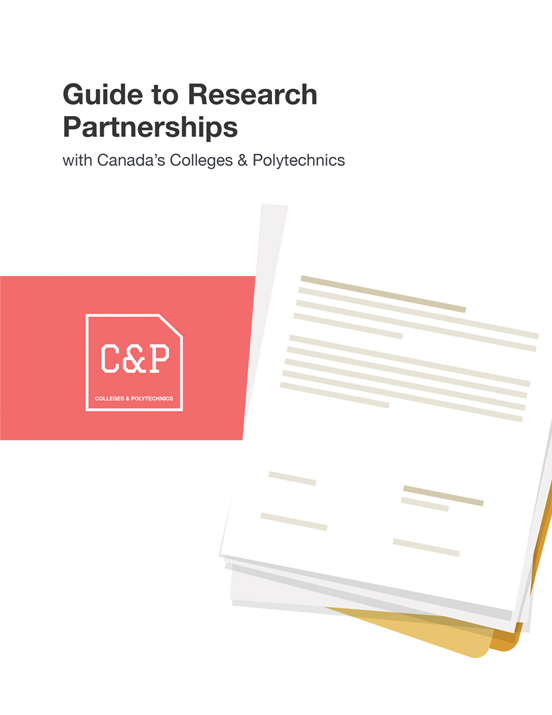Resources
Resources
Akhil Sharma
Southern Alberta Institute of Technology
Architectural Technologies, Diploma
Max Melling
British Columbia Institute of Technology
CNC Machinist Technician, Diploma
2019 – House of Commons consultation on Budget 2020 Standing Committee on Finance
Key recommendation was:
- Invest $40 million/year in Canada’s network of college-based innovation intermediaries to double the number of small- and medium-sized enterprises engaged in innovation activity, boosting Canada’s green economy in the process
Canada’s Polytechnics & the Skilled Trades
Canada’s workforce is facing two distinct pressure points – an aging workforce and the emergence of disruptive technology. As new technologies become pervasive, the current workforce and recent graduates alike must develop new and in-demand skills to stay relevant in the labour market. As the pace at which Canadians are retiring also increases, the talent pipeline must become more efficient, with qualified workers ready to fill looming vacancies. While these issues are affecting the workforce broadly, the skilled trades are facing these dual challenges faster than most.
In this compendium of stories and examples from across our institutions, we identify the four ingredients of excellence in skilled trades training:
- Future-focused facilities that reflect the ongoing critical role skilled tradespeople play in Canada’s economy
- Innovative training delivery that responds to the pressures apprentices face to both return to trade school and maintain workplace connections
- Supporting greater diversity and inclusion in the skilled trades by building confidence and competency among those groups currently under-represented
- Inspiring leaders, who share their expertise and experience with apprentices who are just starting to imagine where a career in the trades will take them
Guide to Research Partnerships with Canada’s Colleges & Polytechnics
Companies looking to build innovative technologies, capitalize on expertise and solve business challenges will find this resource helpful to understanding how to work with Canada’s post-secondary institutions. Released by the Business + Higher Education Roundtable in collaboration with Polytechnics Canada, this guide outlines practical steps to building mutually beneficial relationships with polytechnics and colleges.
2018 – House of Commons study on experiential learning Standing Committee on Human Resources, Skills and Social Development & the Status of Persons with Disabilities
Key recommendations include:
- Create a single point of entry for employers and students to access all federally-funded experiential learning programs
- Adopt a broad definition of experiential learning that includes learning typologies beyond the traditional co-op model
- Leverage existing investments in infrastructure and Innovation Superclusters to expand experiential learning placements and apprenticeships
- Grow the number of employers offering experiential learning placements by directing federal supports to a greater diversity of employers across a broader range of sectors
- Invest in improved data on experiential learning placements and outcomes
- Extend Youth Employment Strategy (YES) programming to all employers and deliver programming through a single federal department
- Extend YES programming eligibility to recent post-secondary graduates
- Embrace parity of esteem in the skilled trades by treating apprenticeship as an equally valuable post-secondary education pathway in YES programming





